‘David Medalla has left us to enter the dream’
‘David Medalla passed away gently in his sleep,” says Adam Nankervis, Medalla’s partner and longtime art collaborator. ‘Will be meeting you on that blue carousel.’
Is it really possible to encapsulate the life of one David Medalla in an article? It’s like attempting to reduce Eternity in an hour (paraphrasing William Blake) or regard the Master’s hand in every grain of sand (paraphrasing Bob Dylan).
ARTnews, Artforum and other international art publications announced the passing last Dec. 28 of the kinetic art pioneer known for his “Cloud Canyons” foam sculptures (the prestigious Tate Modern has its No. 3 incarnation), for being an agent provocateur heralding the ascendance of installation and participatory art, and for styling himself as “a poet who celebrates physics.” The man is a poet, piper, painter, performer and visionary prankster. His art pieces and performances have figured in landmark exhibitions such as Documenta 5 in Kassel in Germany and the 2017 Venice Biennale in Italy, among others held in London, Paris, New York, Berlin and Manila.
“David has left us to enter the dream. He passed away gently in his sleep,” says Adam Nankervis, Medalla’s partner and longtime art collaborator, in a Facebook post. “Will be meeting you on that blue carousel.” David and Adam got married in a wonderful ceremony in Quezon City on Valentine’s Day more than two years ago. A rainbow flag hung down the altar. On the table were wine from Chile and multi-colored sapin-sapin.
He was a master raconteur, an oral wunder mensch who took me on journeys that very first morning, which were seductive, insightful and encyclopedic. I doubted the truth of some of his stories, but it didn’t matter. There in front of me was a wondrous storyteller, so vivid with details.
Petty Benitez-Johannot, David Medalla’s biographer and friend, shares: “David’s doctors helped David manage the pain caused by gout, the discomfort of on-and-off fluid entering his lungs, and his great difficulty in swallowing. Adam would visit every few months. Boots (Herrera) helped Adam manage David’s household, hospitalizations, and other needs.”
Boots Herrera, director of the Ateneo Art Gallery or AAG, relates:
“David was brought to the hospital five days before Christmas due to severe pneumonia but was tested negative for COVID. His doctor, Dr. Daniel Tan, gave me regular updates, which I passed on to Adam the best and clearest way I could. It had been very difficult for Adam because he could not be with David due to travel restrictions. The day after Christmas, David’s condition worsened. Adam and I had a conference call with Dr. Tan to assess (the situation). It was Adam’s wish to give David his dignity and he did not want him to suffer long.
“In the late afternoon of Dec. 28, Fr Jason Dy administered the last rites for David via Zoom together with Adam in Berlin and a few close friends. David was not alone in his last hours. His four caregivers who had been with him the last two years were there — Anna, Tina, Espy and Lisa — together with myself and Joel de Leon (AAG senior curator) and two relatives.
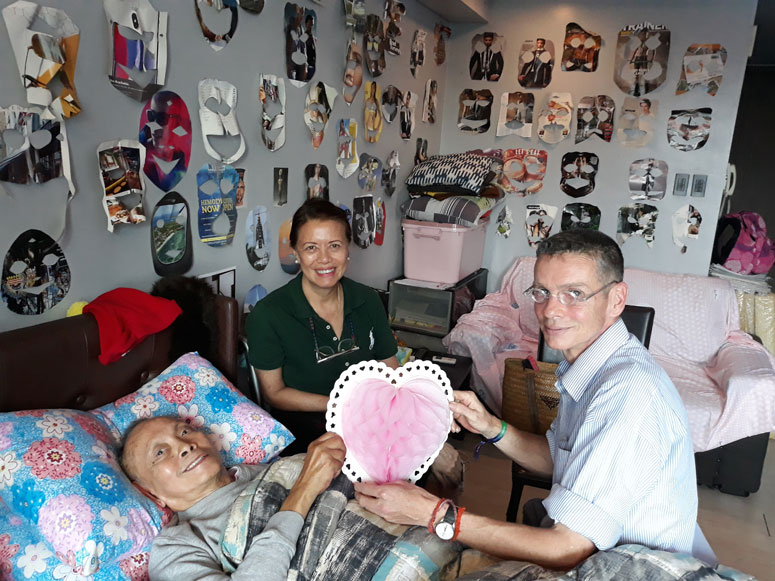
“His remains are now kept in a beautiful clay jar from Sagada by Siegrid Bangyay, a gift from Mara Coson. This is quite appropriate since David went to St. Mary’s School in Sagada for a few months as a young boy. We will keep his ashes in AAG until his eventual inurnment when Adam can safely travel to Manila. During the lockdown, David would often tell Anna that he wanted to visit Ateneo Art Gallery. It will be his temporary home for now.”
“I’ve known David since the Fifties,” shares Johannot. “(Before David fell gravely ill) we hosted him at our beach house in Matabungkay and at MiraNila Heritage House and Library where he was MiraNila’s first artist-in-residence. We were working on a project with a collaborative group of artists working in nearby Murphy, Cubao. Unfortunately, the performance never materialized. (Before going to Switzerland), I would visit David weekly to bring fruits and news.”
The man called Medalla made the news early on. According to Artforum, “Medalla — born in Manila in 1938 — made local headlines as a boy when he claimed to have fallen asleep while reading aboard a ship docked at a Manila port, waking up to find that it had departed for Hong Kong. Shortly thereafter, in 1954, at the behest of poet Mark van Doren, he arrived in New York at Columbia University, where he studied philosophy and literature as a special student. While studying in the US, he met Filipino poet and artist José Garcia Villa, who fostered his interest in painting. On his return to Manila, he began creating art in earnest, with the support of Catalan poet Jaime Gil de Biedma and painter Fernando M. Zobel.”
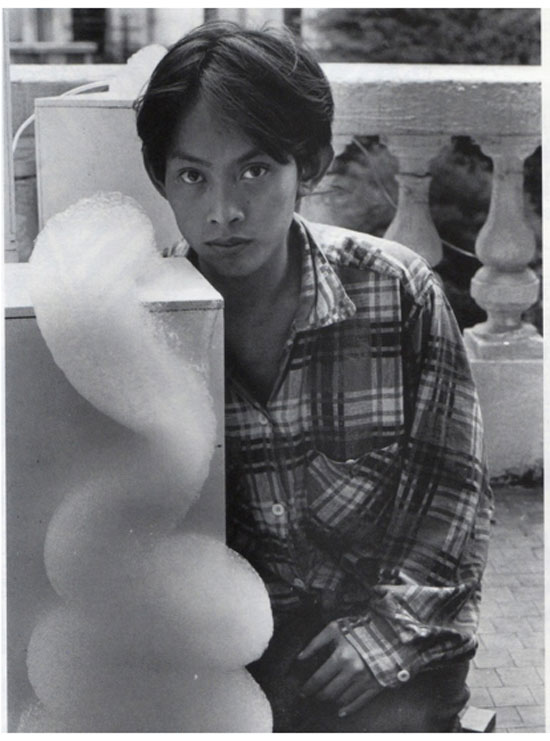
The boy — who sold Chiclets chewing gum at Luneta, worked as a newsboy and bootblack, watched cars at night, read Walt Whitman, and wrote incandescent poetry — would find himself in London during the Sixties, co-founding what would become a very influential gallery called Signals and becoming a cult figure in the brackish waters of the British avant-garde — before things took a turn for the legendary. Johannot informs: “The influential YBA or Young British Artists in 1996 (an artist group that boasted the likes of Damien Hirst, Tracey Emin, Jake and Dinos Chapman) selected David Medalla as one of three international avant-gardes who had pushed the boundaries of artistic conventions and led the way for the emergence of this new generation of artists.”
Shine on, you crazy diamond
I have interviewed the man a handful of times and each session was an adventure. The first time was in 2011 at Ateneo Art Gallery. It was a homecoming of sorts for David, and he was like an elder rockstar on tour. He wore a black long-sleeve shirt and a woven hat, sipping Coca-Cola while regaling me with stories of holding a grudge against William S. Burroughs and cooking adobo for marathon drinkers Nick Joaquin and José Garcia Villa. Oh yeah, there was a time someone waited for the arrival of Samuel Beckett and instead found David Medalla sitting on the lap of Francis Bacon, or something. The anecdotes from the great man flowed like nepenthe that day.
The last time I sat down with Medalla was in 2019 at MiraNila in QC. He was already confined to a wheelchair and communicated via whispers, grunts and gestures — with Adam Nankervis by his side to “amplify” each sentence trying to climb out of David’s throat. Adam was the medium. Like the soulmate that he is. Or like Aaron to Moses.
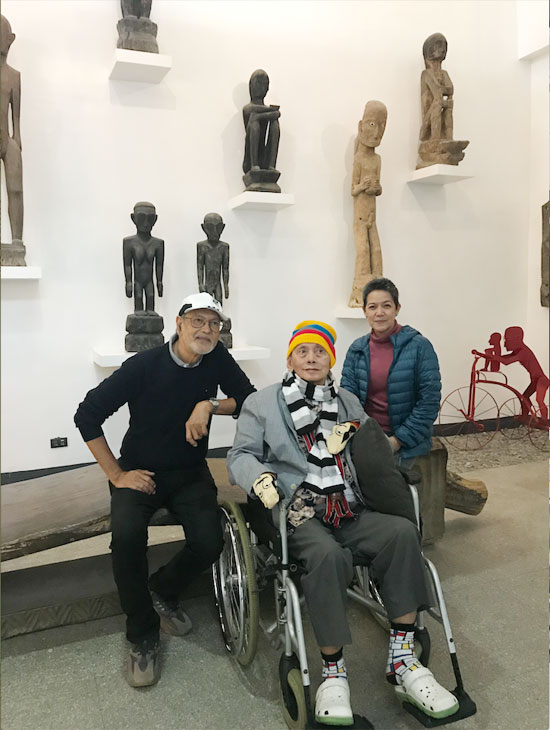
At one point, David grabbed a flower that had fallen to the ground and motioned upwardly. “This should go to the altar,” mumbled the artist, probably imagining an installation for the heavens. This man had built a career out of taking everyday objects (such as soap bubbles, sand or fabric), putting them together, and giving them a transcendental spin. I remember the nearby chapel’s stained-glass windows filling everything with color. David bathed in the glow. The physics, the poetry of it all.
For Adam, currently holed up in Another Vacant Space in Berlin, there are a lot of things to remember about David and much more to un-forget, maybe in less sadder times.
“When I first met David in Manhattan in winter,” shares Adam via email, “he promised to take me to Manila Bay. New York was his spiritual home; London, his formulation; Berlin was the hearth; and Manila, his heart.”
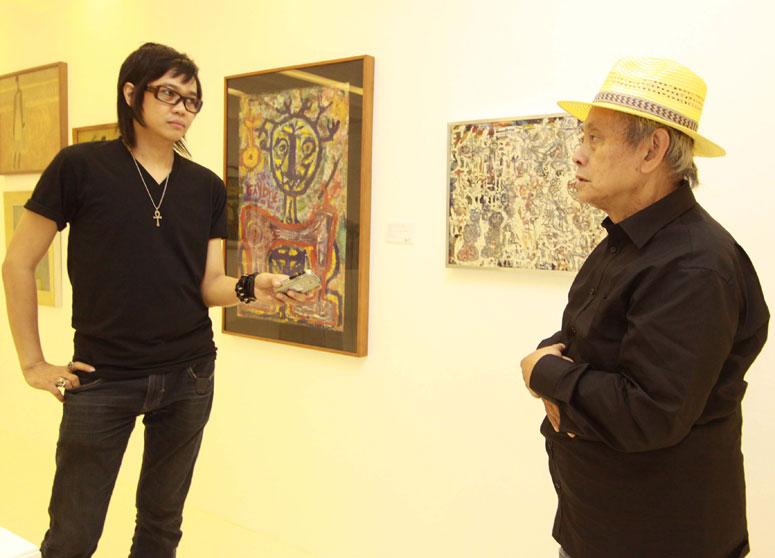
It was 1990 and Adam had been crashing in the Chelsea Hotel room of a friend, Inigo Batterham, who saved him from freezing on the corner of 23rd St. and 8th Ave. “Dave had come to visit Inigo, an old friend from England,” recalls Adam. “Dave saw me sleeping, splayed on a pink divan which I had fallen on and broken. I used to spray-paint my boots in different shades. That morning they were gold. Inigo introduced me as I raised my head: ‘Hi, David. This is Gold Boots, a Christmas gift for you.’”
More Christmases to come for those two as well as oracular art.
Adam says, “We moved in together within a month. The bond was deep and profound. I navigated across 23rd St. every day to his room at George Washington Hotel where he told me W.H. Auden had written, ‘Lay your sleeping head, my love/ Human on my faithless arm...’ (from the poem ‘Lullaby’) in that very room, 303. The ghost of Auden’s poem was synonymous with that room for me ever after.”
There happened lots of art exchanges — swapping collages, sharing drawings, stains and materials such as ketchup or squashed figs — and revelations of histories.
“Dave was a master raconteur, an oral wunder mensch who took me on journeys that very first morning, which were seductive, insightful and encyclopedic. I doubted the truth of some of his stories, but it didn’t matter. There in front of me was a wondrous storyteller, so vivid with details.”
What was the thing that only a handful of people know about David Medalla? Adam answers, “David was so openly a bon vivant and a very loving, sharing person, but kept his homes, and all that they contained — whether it be ‘his holes in the wall’ or his home in Bracknell — very private, very few friends were welcomed. In that sense, Dave was very much a hermit. For someone who delighted in being very public, he also needed more time to withdraw.”
Ah, the complex, enigmatic nature of David and Adam’s relationship. Adam recalls, “David used to say, ‘Let them keep guessing, Ads!’ We did make a sentence (about it) for The Secret History of The Mondrian Fan Club in the Chelsea Hotel in 1992, which we have been spelling out in global graffiti, form by form which was revealed at the Mondrian Pavilion during the Venice Biennale. No one that I am aware of has spelled it out yet. One day I shall reveal the manifesto we wrote.”
Medalla and Nankervis’ life together has been peppered by guest stars.
“David knew Francis Bacon well,” says Adam, “and Francis was a great admirer of David's paintings and bought one of a 1977 series titled ‘Ammonia and the Dagger Boys,’ a constellation of paintings of a serial killer, as well as David’s exploration of the beginnings of Punk, which was exhibited at the Royal Festival Hall as part of his ‘Boys of England’ project.’” Medalla even performed with the Sex Pistols, who rehearsed in the basement of the Artist for Democracy HQ in Fitzrovia. Adam recalls that night of art and anarchy: “David’s body and face were covered in latex condoms that the crowd would pull on and hit him with a snap of backlash while he shuffled on stage as the Sex Pistols played. David lay strewn on the floor with the weight of people body-slamming above him.”
Aside from the brush with Bacon and the Pistols, there were also meetings with James Dean, Mick Jagger, Marianne Faithful, activist Angela Davis, etc. But Medalla was himself equally celebrated, iconic in his demeanor. “He was a well-known experimental artist who crossed all genres which made him accessible to many people — famous or not. Many remember him as a fascinating, engaged and empathetic friend.”
Now, David is the empty chair in Adam’s immensely vacant space, the half of a Mondrian painting. All the people in David’s circle of acquaintances and friends feel the void. The art world has been left threadbare by the loss of another icon, legend, genius. Life is ephemeral, that one is a given. We are all bubbling toward death. But a snapshot of a life such as David Medalla’s is enough to give us a glimpse of the canyons of Transcendence.
LOREN LEGARDA, DEPUTY SPEAKER OF THE HOUSE
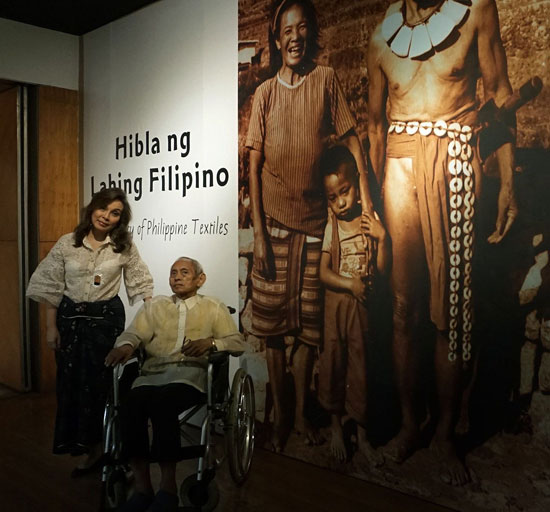
I remember David fondly for his witty stories and for his presence. I knew then when I first met him at an event of the Philippine Embassy in London, that I was in the presence of a genius, an inspiring icon for many of our Filipino artists.
He even graced us with his presence and creativity as he made performances for the Philippine participation in the Venice Biennale in 2015, a significant milestone noting our country’s 51-year hiatus from the most prestigious art exhibition.
I would then meet him again here in the Philippines and continue to be spellbound by his stories and by his brilliance. I also brought him to the Hibla ng Lahing Filipino, the first permanent textile gallery in the country at the National Museum of the Philippines, which he very much appreciated.
We will miss you, David. May you soar freely into the clouds.
TRICKIE LOPA, DINDIN ARANETA, LISA PERIQUET FOUNDERS OF ART FAIR PHILIPPINES
TRICKIE: My first live encounter with David Medalla happened perhaps 10 years ago, at a dinner hosted by Paulino and Hetty Que at their home. If I remember right, the dinner capped a visit by David that included an exhibit of recent works at the Ateneo Art Gallery, a lecture, and a book launch. For an art-obsessed fangirl, I could hardly contain my squeal of delight when I found out I had been placed at the same table as the guest of honor.
He lorded it over the meal, reminiscing nonstop about his early days as an artist, before he had relocated to London. He recounted the salons he put together, herding culturati to huddle inside structures he fabricated from found objects, just to discuss art. I recall phoning Gilda Cordero Fernando after the dinner, as her name came up, and she did confirm that they would gather under makeshift tents, somewhere near Intramuros, and just hang.

The most awaited part of the evening was when our hosts ushered us to view David’s “Self-portrait,” a collage of him as a young man looking directly at the viewer, sticking his tongue — a bright red condom — out at the world.
DINDIN: I met David through Art Fair Philippines when he worked on a solo project for the fair titled “A Stitch in Time.” I’ve always enjoyed engaging with his work and oftentimes together with my children. During David’s performance at the Ateneo Art Gallery where he had a carpet of rose petals on the ground, David asked for a volunteer from the audience and I prodded my daughter Lucia. She went up to him and he gave her rose petals and had a brief conversation. He explained to her the origin of her name: it means “light.” He also told her Santa Lucia was a Christian martyr whose eyes were gouged out when she was tortured.
We also never fail to see the work “Cloud Canyons No. 31” everytime we visit The Podium as it is right next to the BDO Corporate Center lobby where the work is installed. We love seeing it — this bubble machine spewing foam of various forms. Once my children got excited and touched and played with the bubbles. Luckily, the guards didn’t stop them. I often take a photograph of it everytime I pass by. The soap bubbles always take on a different form.
LISA: I first met David Medalla maybe eight or 10 years ago, when I was tasked to fetch him from Ateneo University and take him to the National Museum for a talk. It was a lengthy car ride, and he spoke for most of it! He was then visiting the Philippines from his base in the UK, so he was reminiscing about his time as an artist here. I do remember him talking about his famous protest during the inaugural gala of the Cultural Center of the Philippines.
I met him again in 2018 when we invited David to show his work at the Art Fair. He was already confined to a wheelchair but was still voluble and full of stories.
What is the overarching theme in his art? I think many of David’s works are derived from his life experiences, memories and observations, which he then translates into a work of art in his own idiosyncratic and intuitively brilliant way. As to an overarching quality to his work, I believe they are all imbued with a spirit of lightness and joy — almost a childlike marveling at life.
PATRICK FLORES, CURATOR OF UP VARGAS MUSEUM
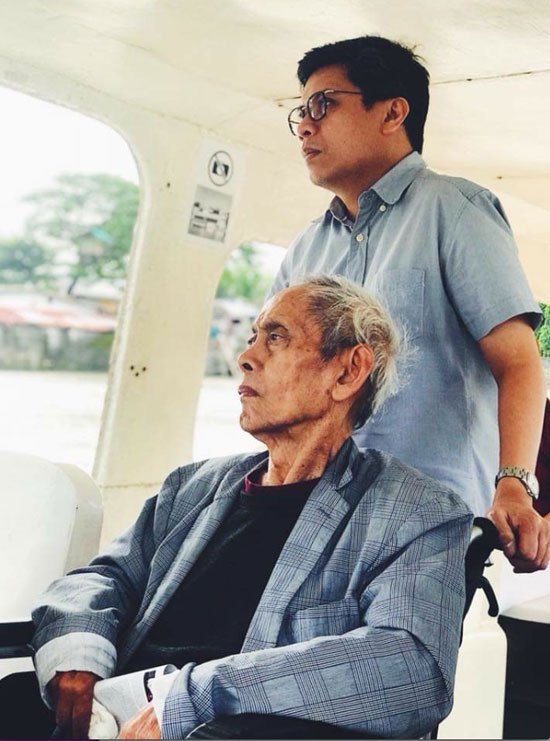
I finally met him in person in 2006 in Madrid at the opening of a Filipiniana exhibition. Every breakfast, the Filipinos would surround him at the table just to listen to his fables and fictions. He was tireless in his telling, scattering morsels from Philippine history and culture and from the world over. For him, all this circulated within a spectrum, a continuum in his worldly archive. One afternoon, he returned to the hotel with photocopies of magazines and newspapers, with the letters of the texts marked by colored pencils. He distributed the sheets to us and assembled us as a choir of sorts, with some voicing the consonants and others the vowels. It was fantastic, so very impromptu and every day. In retrospect, I thought that such a moment fulfilled the promise of art so that to name it as such became gratuitous.
What do I think is Medalla’s most important work? Maybe not the best question to ask and answer. But his 1965 “MMMMMMM...Manifesto (a fragment)” says it all: ‘I dream of the day when I shall create sculptures that breathe, perspire, cough, laugh, yawn, smirk, wink, pant, dance, walk, crawl… and move among people as shadows move among people… on their way from our galaxy to the Spiral Nebula…’”
GUS VIBAL, EXECUTIVE DIRECTOR OF VIBAL FOUNDATION AND PUBLISHER OF THE LIFE AND ART OF DAVID MEDALLA

David was the Fairy Godmother of Art who with his wand transformed me, changing my perceptions of what is truly artistic and valuable. He disabused me from the selfish stance of only valuing artworks that were hung on walls or commodified through art auctions or galleries. Once, after I had lamented to him that his special reinstallation of “Cloud Canyons” for the Barcelona City Hall had been taken down and lost, he simply told me to stop bemoaning the loss of artwork that he could simply recreate and that he would even do this if only for my own express pleasure. David forever changed my misguided concepts of what is truly authentic art, and for that I, as well as those whose lives he touched, will never ever forget him, notwithstanding all those difficult lessons he — as well as my late great Mama (Esther Asunción Vibal) — personally taught me.
Although he always claimed to me that he was a citizen of the world, David remained resolutely Filipino in his nationality. I will never forget his Philippine passport with pages and pages crammed and overflowing with residence permits and visas from around the world!
Banner caption: Iconic multi-disciplinary genius David Medalla passed away on Dec. 28, 2020. Photo by Jojo Gloria. Photos are courtesy of Art Fair Philippines and Adam Nankervis.


